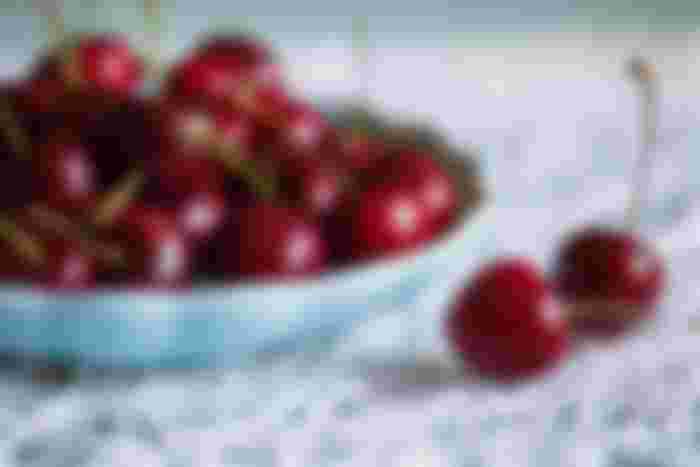
Cherries are a fruit that provide us with excellent nutritional properties, in addition to numerous health benefits.
With cherries you can prepare many types of desserts and sweet accompaniments such as cakes, jams, smoothies, cakes and even liqueurs or gazpacho.
But above all they can be eaten (and almost what could be said "must") be eaten raw. Its flavor is delicious and it is consumed directly when the properties of the cherry are fully presented in our diet.
The cherry, whose scientific name is Prunus cerasus, has been used for a long time as an intestinal cleanser, to rid the body of toxins.
This is because the pigments that give them their purple color, anthocyanins, which are a type of flavonoid with great purifying properties.
These anthocyanins in cherries are also very powerful antioxidants and according to studies carried out at the University of Arizona, cherries are the fruit with the highest concentration of flavonoids that exists.
This makes it of importance in the treatment and prevention of some of the most widespread diseases today, related to deterioration, cancer or Alzheimer's.
Main properties of cherries and the benefits of consuming them
Among the properties of the cherry we cannot stop thinking about the main ones:
Antioxidant properties. Cherries are included in the superfruit category because they are loaded with antioxidants called anthocyanins, which help reduce heart disease and serve to counteract the processes that lead to cancer.
Additionally, cherries are one of the few food sources containing melatonin, an antioxidant that helps regulate the heart rate and sleep cycles of the body.
Vitamin A. Cherries are an excellent source of beta-carotene (vitamin A). In fact, they contain 19 times more beta-carotene than blueberries and strawberries.
Vitamin A serves for the formation of teeth, their preservation and acts on eye health, both in sight and in general eye health.
Source of more vitamins and minerals. In addition to vitamin A, cherries are rich in vitamins C, E, potassium, magnesium, iron, calcium, folic acid (B9), and fiber.
A healthy mind. Cherries are known as 'brain food', as it helps maintain good brain health and prevent memory loss. Do not forget, eating this fruit when it is your season will help your health.
Because the cherries contain anthocyanins, a component that serves to attract animals to consume this fruit, in order to later expand the seeds.
Therapeutic and pharmacological use of this pigment is recent, but its ability to reduce coronary heart disease, inflammation, and symptoms of arthritis and gout has been proven. In turn, it has anti-tumor, anti-inflammatory and anti-diabetic effects, which can benefit many people. It has also been shown to be useful in treating obesity.
Something to note is that anthocyanins are easily absorbed by the human intestine.
Fiber. As it is a good source of fiber, it is important and helps digestive health.
Muscle pains. Due to its powerful anti-inflammatory benefits, cherries can help reduce pain; They are highly recommended for the pain of tendons and muscles that runners and athletes suffer from overload after training.
Therefore, if you practice an aerobic sport, if you run or go cycling, cherries can help you recover after intense training.
Are cherries fattening? How many calories do they have?
Many times you hear the question of whether cherries are fattening. This confusion is mainly due to the use of this fruit in pastry, and also to the amount of sugars added to it for different processes (jams, coulis) or for the preparation of cherry clafoutis.
But the cherry itself is not fattening. A cup of cherries has just 87 calories, 22 grams of carbohydrates, 1 gram of protein and 3 grams of fiber.
Cherries are a good snack or dessert of important choice for weight maintenance, due to the low calorie intake.
Cherry pit toxicity and contraindications
The cherry stone contains its seed, and these seeds are toxic because they have cyanogenetic glycoside compounds.
These when ingested are transformed into cyanide, but thanks to the natural design, the bone protects the seed and prevents it from happening, in normal circumstances, from being swallowed by both animals and people. The organism will not be able to digest the bone and expel it as it is, keeping the seed intact inside.
